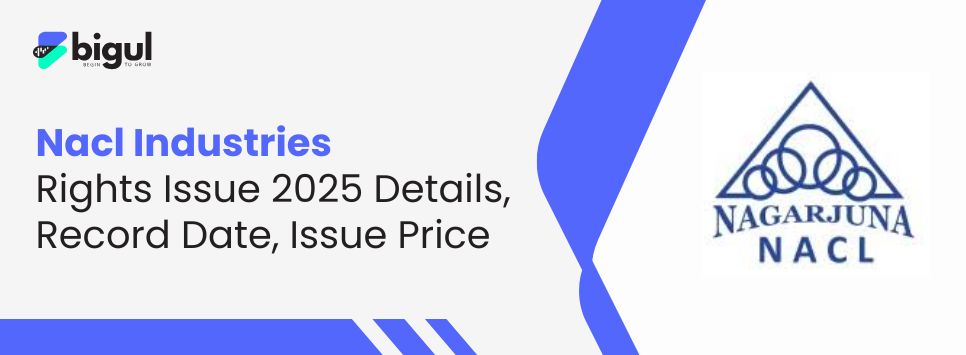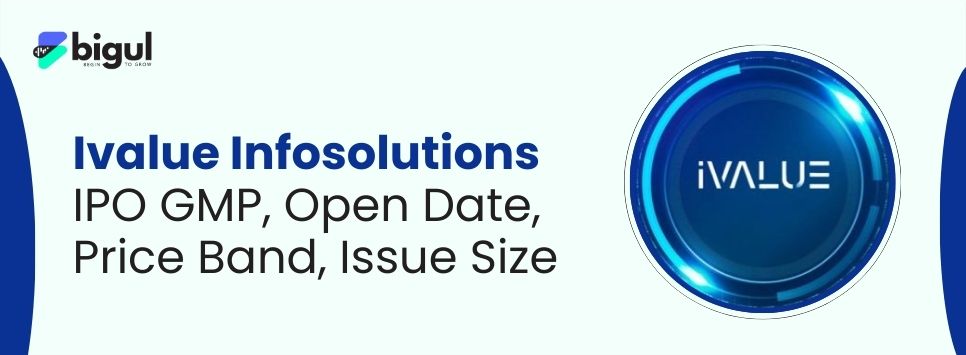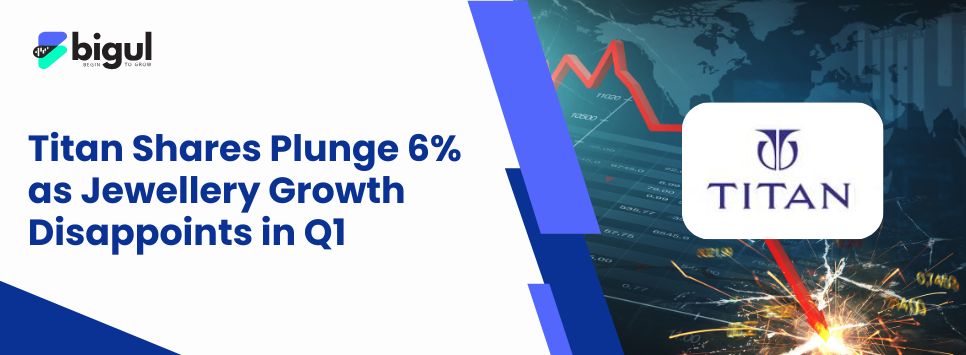Titan Company witnessed a sharp sell-off on Tuesday, July 8, 2025, with its Titan share price on the NSE plummeting 6.13% to close at Rs 3,441.30. This marked the steepest single-day decline since February 2025, eroding approximately Rs 17,000 crore in market capitalisation.
The recent sell-off of Titan occurred due to the company’s Q1 results update. The sell-off was due to the decline in the growth of the jewellery business.
The jewellery division of the Titan company contributed over 85% of the total revenue. The rapid reaction of investors to the news saw a spurt in trading volumes, which rose to almost 4 million shares on the NSE, and this was a reflection of the fear on the part of the investors about the short-term future of the company. Titan's share price volatility continued throughout the week.
Let's understand how the Jewellery business of Titan declined in this quarter
Jewellery: The Core Weakness or Strength For Titan
The domestic Titan jewellery business grew 18% year-on-year (excluding bullion), significantly below the 22–25% growth anticipated by the market. While the Akshaya Tritiya festival period initially boosted sales, demand softened sharply from May through mid-June as gold prices surged. Such instability contributed to the fall in demand of studded and heavy jewellery instead of lightweight and low karat jewellery and coins, which reduced profit margins.
Notably, buyer growth remained flat year-on-year for both Tanishq and CaratLane, indicating stagnant consumer traction despite aggressive store expansions. The studded ratio—a key profitability metric—contracted substantially due to subdued demand, though plain gold jewelry maintained mid-teen growth through the quarter.
Gold Prices and Consumer Sentiment
Gold prices surged nearly 30% year-on-year during Q1, creating a challenging environment for discretionary spending. This escalation compressed consumer budgets, particularly in non-essential categories, as households redirected funds toward essentials amid persistent inflation. M
Titan Management noted that like-for-like (L2L) growth in Tanishq—while in early double digits—was entirely driven by higher ticket sizes rather than increased footfall, highlighting underlying volume stress. CaratLane sustained healthier L2L growth but faced similar volume pressures in its mid-premium segment. The trend of moving to coins and low-weighted products highlights the high price sensitivity of purchasers, which affects margin profile and growth assumptions of Titan jewellery business in the long-term perspective. The extent of caution was especially observed in the rural markets, and urban centres were slightly more resilient yet restricted.
Valuation and Market Reaction To the Titan share price
The Titan company share price decline reflects a market reassessment of near-term growth risks. Despite the drop, Titan retains a formidable Titan market cap of $35.64 billion (₹2.98 lakh crore), ranking among India’s top consumer brands. Historically, the stock has delivered stellar returns—its market cap expanded from $4.27 billion in 2016 to current levels, reflecting a 734% increase over nine years.
However, the Q1 miss raises questions about sustaining premium valuations, especially with a price-to-earnings (PE) ratio of 98, significantly above the industry average of 74. Foreign institutional investors reduced exposure during the sell-off, contributing to the downward pressure on the Titan share price NSE. The Titan market cap erosion also impacted broader Nifty indices, given Titan’s weightage as one of the largest consumer staple products.
Operational Headwinds and Inventory Dynamics Of Titan
The Titan jewellery business faced additional strain from inventory management challenges during the quarter. Through high prices of gold, the pressure of working capital demands was high, which put pressure on the cash flow though the revenues improved. In the interim, the policy of keeping high-purity stock by Tanishq in order to achieve quality further escalated the expenses as the bullion rates soared.
Meanwhile, competitive intensity increased from regional jewelers offering lower making charges, particularly in tier-2 and tier-3 cities where disposable incomes are more sensitive to inflation. Titan’s supply chain adaptations—including localized sourcing and dynamic pricing models—provided limited relief given the scale of commodity price movements. These operational complexities compound the growth challenges in Titan’s largest segment.
Strategic Challenges and Forward Outlook
Titan’s heavy reliance on jewellery makes it uniquely exposed to gold price volatility and economic sentiment shifts. The company’s expansion into emerging categories (e.g., fragrances, bags) and international markets provides diversification but will take years to meaningfully offset jewellery’s dominance. While 23 of 35 analysts retain "buy" ratings, their optimism hinges on Titan’s ability to reignite volume growth through festive-season promotions and entry-level collections. For long-term investors, the dip may present an entry point, but much depends on gold prices stabilizing and consumer confidence rebounding during the Diwali period. Management’s upcoming investor communications will be scrutinized for margin recovery plans and volume-growth catalysts.
The sharp correction in the Titan share price NSE underscores the market’s low tolerance for misses in core segments. Although Titan in terms of brand equally holds its own due to its brand strength and diversifying strategies, it is essential to rebuild the growth equation of jewellery in order to resurrect the level of the Titan company share price at its former position
Investors will closely monitor festive demand and margin trends to determine if this slump is a temporary setback or a sign of deeper challenges in the evolving luxury retail landscape. The Titan market cap recovery trajectory now depends on demonstrable improvements in the Titan jewellery business fundamentals before the next earnings release.

.jpg)






.jpg)
.jpg)
